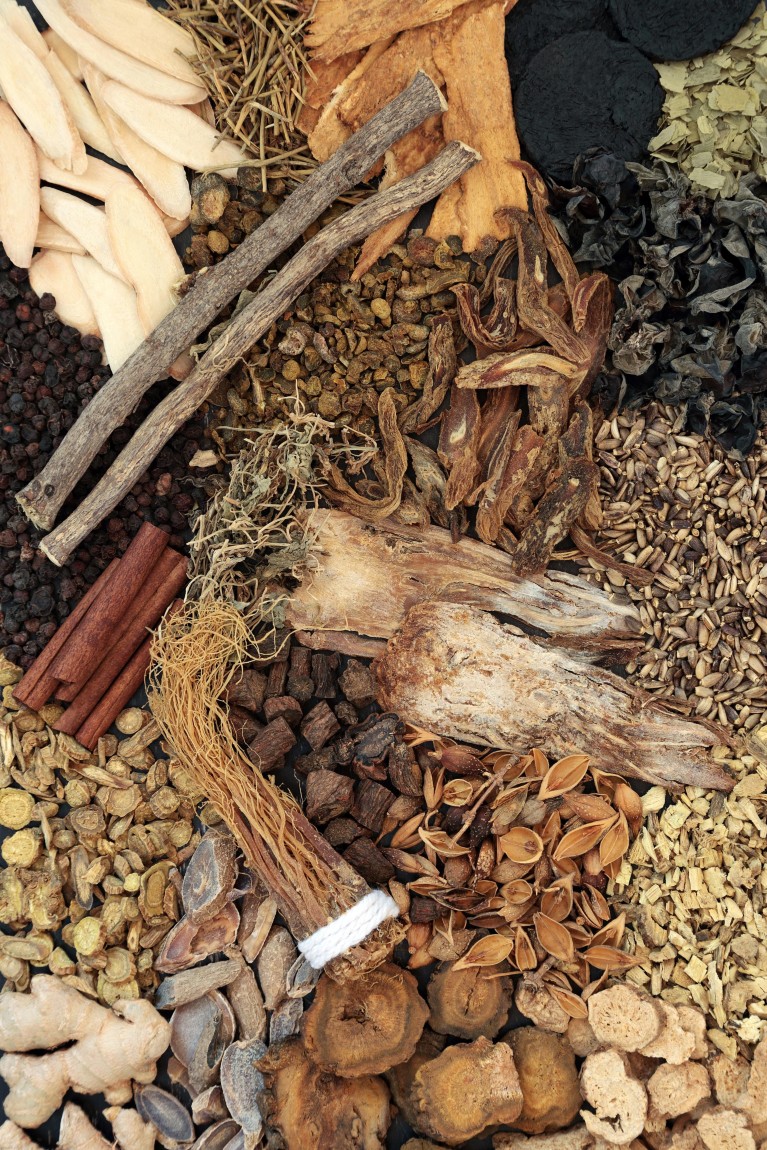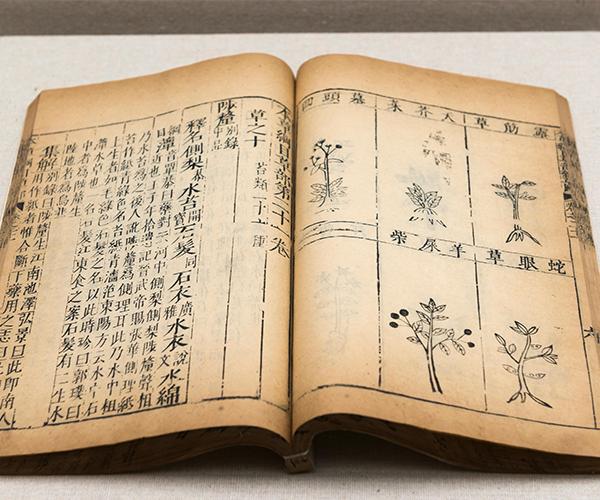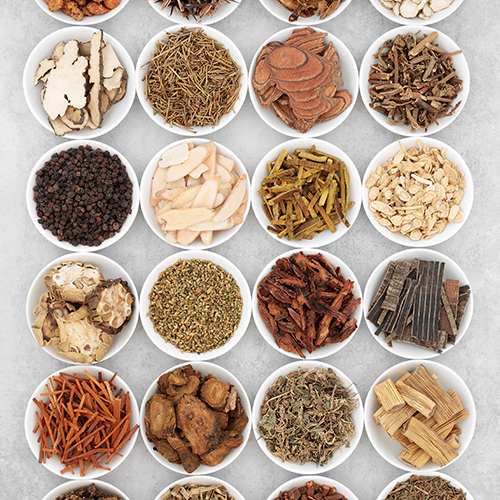
As early as the Qin and Han Dynasty (roughly 221 BCE to 220 CE), Sheng Nong’s Herbal Classic recorded 365 medicines. By the time of the Ming Dynasty (1368–1644), the number of Chinese herbal medicines had grown to close to 2,000.Credit: Marilyna/iStock/Getty Images Plus
Plants can be frustratingly inconsistent. With so much dependent on environmental factors, even clones can produce foliage, roots and fruits of varying quantity and quality. Issues with consistency in plant studies have thwarted attempts to characterize the many botanical extracts used in traditional medicines. But traditional knowledge could be a rich resource for drug discovery, says Timothy Mitchison at Harvard Medical School’s Department of Systems Biology.
For example, pharmaceutical chemist, Youyou Tu, discovered artemisinin, an antimalarial extract from the plant Artemisia after being inspired by an entry in the sixteenth century tome, Compendium of Materia Medica. Used as an ancient remedy for fever, artemisinin was isolated and refined by Tu in the 1970s, and according to the World Health Organization, antimalarials containing artemisinin have saved more than three million lives since 2000. Tu was awarded a Nobel Prize for her work in 2015.
“The long history of human data we have for traditional Chinese medicine could be most valuable thing you can get to help characterize any drug,” says Mitchison. He adds that while traditional Chinese medicine-derived molecules typically exhibit poor pharmacology by the standards expected of a synthetic oral drug, that has implications that are under-explored. He says that short plasma half-lives could suggest these molecules have higher action in the liver or kidney, while low oral bioavailability could be the result of action in the gut, which, he says, might be useful for targeting gut diseases.

1,892: The number of herbs mentioned Compendium of Materia Medica. Credit: Lou-Foto/Alamy Stock Photo
In the case of a plant molecule, colchicine, Mitchison’s long-time study subject, its short half-life corresponds to local action in the liver. “These special features of plant-derived molecules cannot be achieved using standard synthetic drugs, which are systemically adsorbed,” he says. “I would encourage medical researchers to have an open mind regarding different medical traditions.”
In Tu’s lecture after winning the Nobel Prize in Physiology or Medicine, she recalled the difficulties of plant research, ranging from managing extraction and purification technologies, to the variables involved in the study of the six Artemisia species, such as accounting for origin, harvest season, and the use of different plant parts.

7,000: Roughly the number of samples in the traditional Chinese medicine collection at the Royal Botanical Gardens, Kew. Credit: Ileana_bt/Shutterstock
The technical and taxonomic challenges of plant research are a source of fascination for Monique Simmonds, director of the Commercial Innovation Unit at the Royal Botanical Gardens, Kew, in London, one of the world’s largest botanical collections. But increased scrutiny of plant research aimed at pharmaceuticals is crucial, she says.
In 1998, Simmonds helped raise funds to create a 7,000-sample traditional Chinese medicine plant collection at Kew, and she currently leads a 300-strong research team focused on unlocking potential drugs derived from plants.
“Some fellow scientists are rightfully cynical about traditional Chinese medicine − some of the research, unfortunately, hasn’t been done with the level of accuracy that you would need for a medicinal drug,” she explains. “A common mistake would be to study different plant species in the same family, such as mistaking Korean and Chinese ginseng.”

17,810: The number of plant species that have a medicinal use, out of some 30,000 plants for which a use of any kind is documented.Credit: Marilyna/iStock/Getty Images Plus
Improving plant study replication through more controlled global standards is part of Simmonds’ mission as the president of the Good Practice in Traditional Chinese Medicine Research Association. Established in 2012, the association now involves 112 institutions and 24 countries, who work on creating better guidelines.
“For example, we would recommend consultation with taxonomists to help independently verify the plants or plant parts being used in research,” says Simmonds. “While taxonomy has been the backbone of Kew’s scientific research, in the next 10 years accelerating taxonomy with machine learning and trait research − from genomic and chemical to morphological and ecological − will also be vital.”
Speeding up drug discovery
At Kew, drug discovery is also being accelerated by machine learning and high-throughput mass spectrometry that reveals the chemical structures of plant compounds. Kew’s Small Molecule Analysis Laboratory, for example, profiles small molecules produced by plants and fungi to help identify chemical structures that might be useful for drug development.
Kaixian Chen, a professor at the Shanghai University of Traditional Chinese Medicine (SUTCM), points out that these types of resources have radically sped up the shortlisting process for drug candidate study.
Chen was an early user of computer-aided drug design in the 1990s. “One of the biggest technological leaps during my career has been in virtual screening: we pair our small molecule libraries of traditional Chinese medicine bioactive components with protein structures that are most likely to bind to specific drug targets in our database, saving us a lot of research time and money,” he explains.
In 2021, for example, using high-throughput screening of natural product libraries, Chen’s colleagues at SUTCM discovered an agonist to bile acid receptor TGR5 that is a potential target for drugs to treat obesity. The agonist, notoginsenoside Ft1, is derived from Panax notoginseng, a ginseng species used for 2,000 years in traditional Chinese medicine to enhance circulation.
A small, early mouse model study has validated notoginsenoside Ft1’s potential in treating obesity. “But if we are to continue to make the most of accelerating drug screening technologies, we must ensure scientific rigour in traditional Chinese medicine studies,” Chen says.

